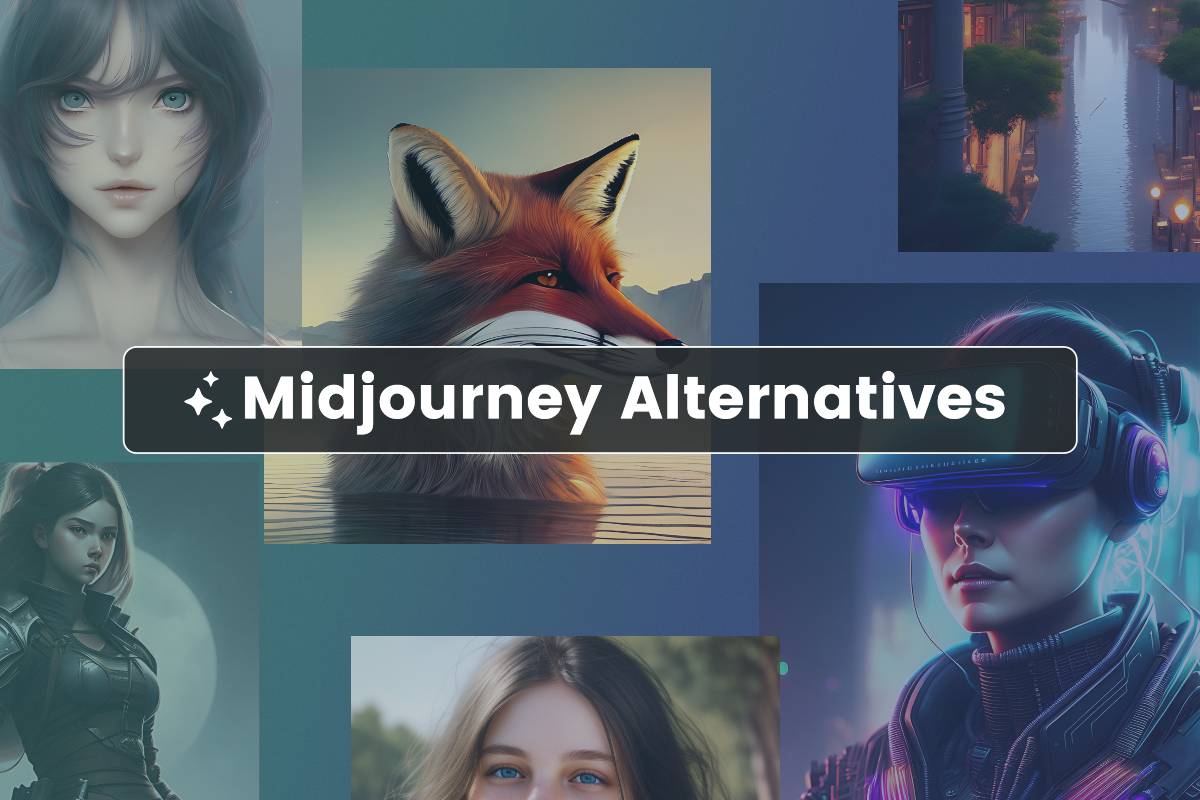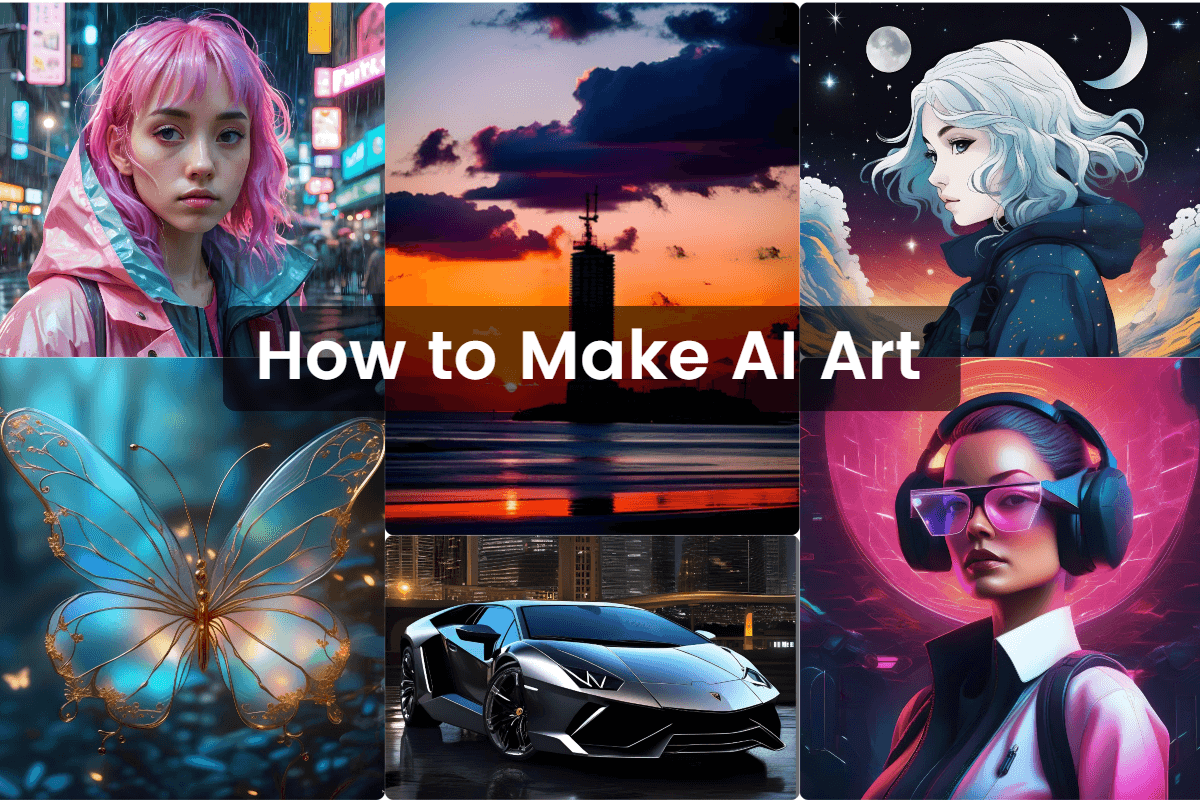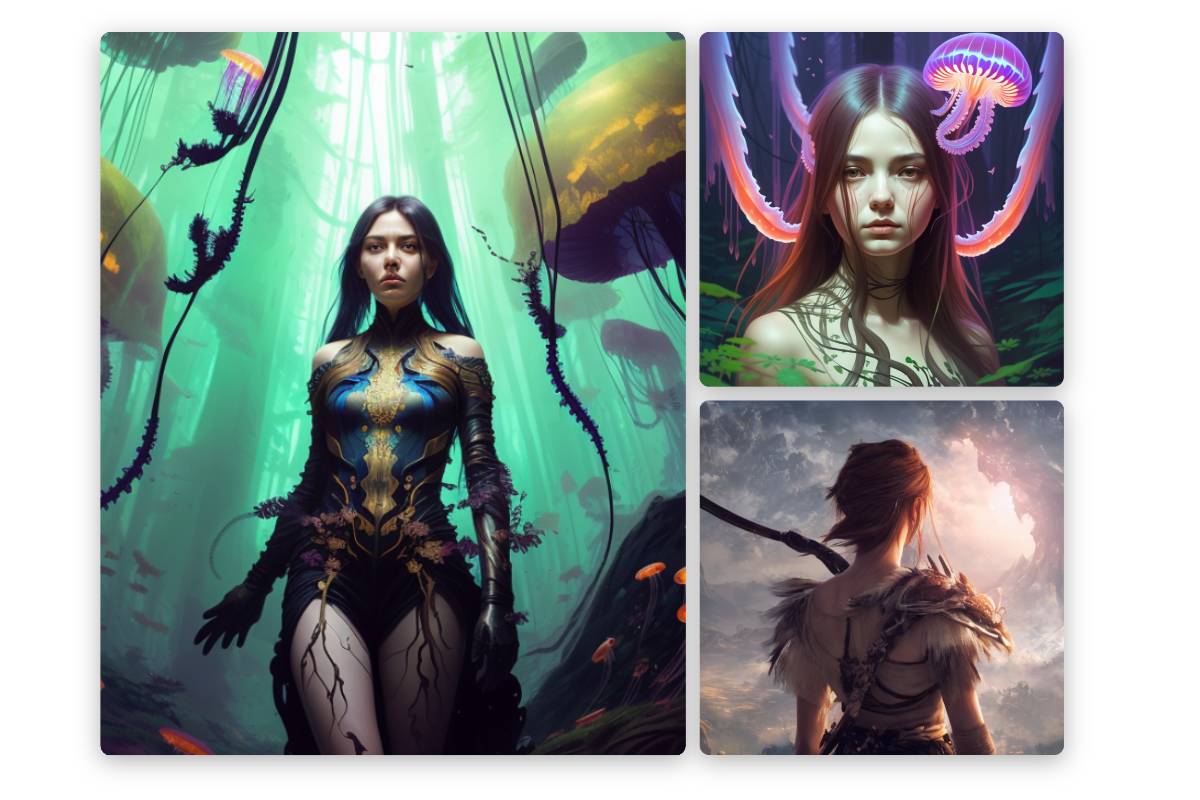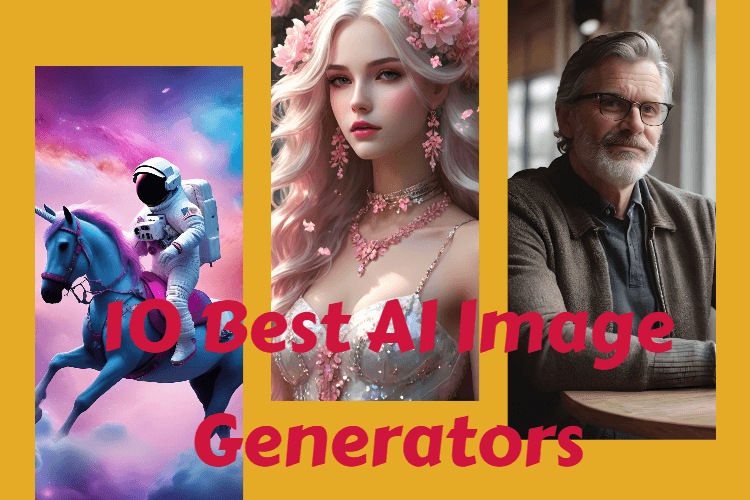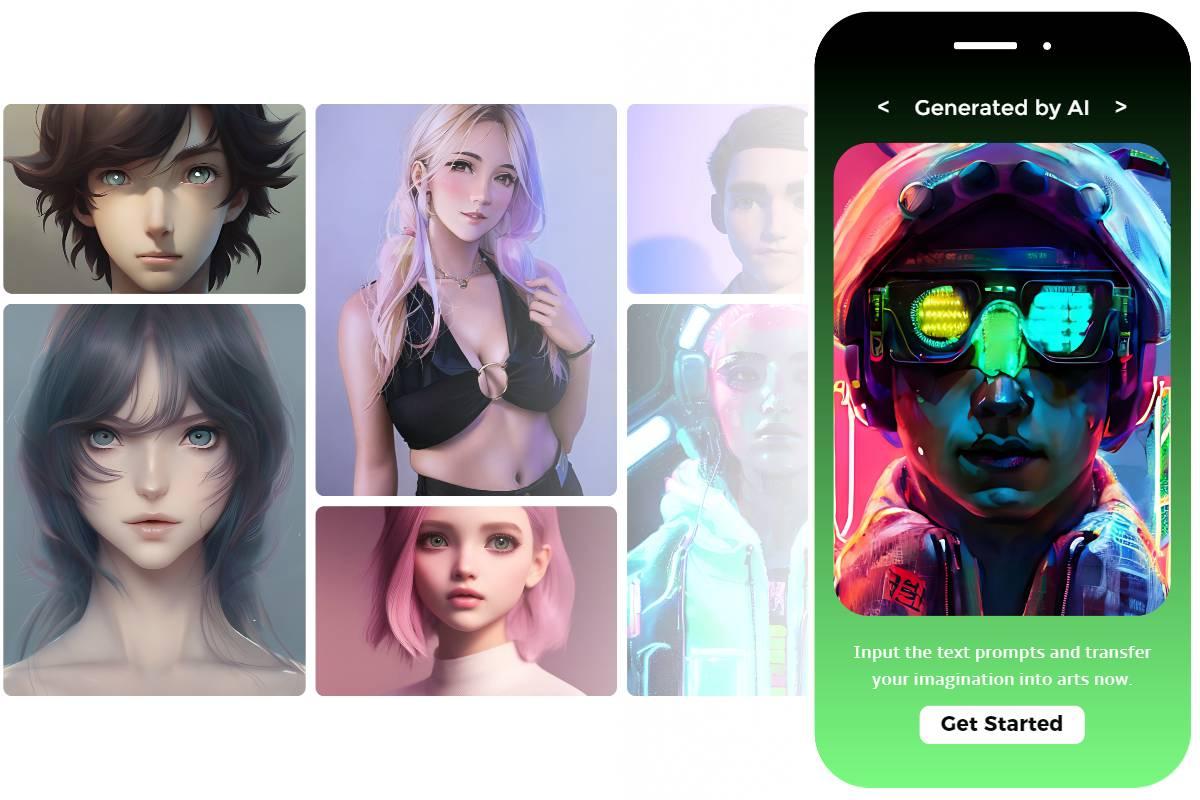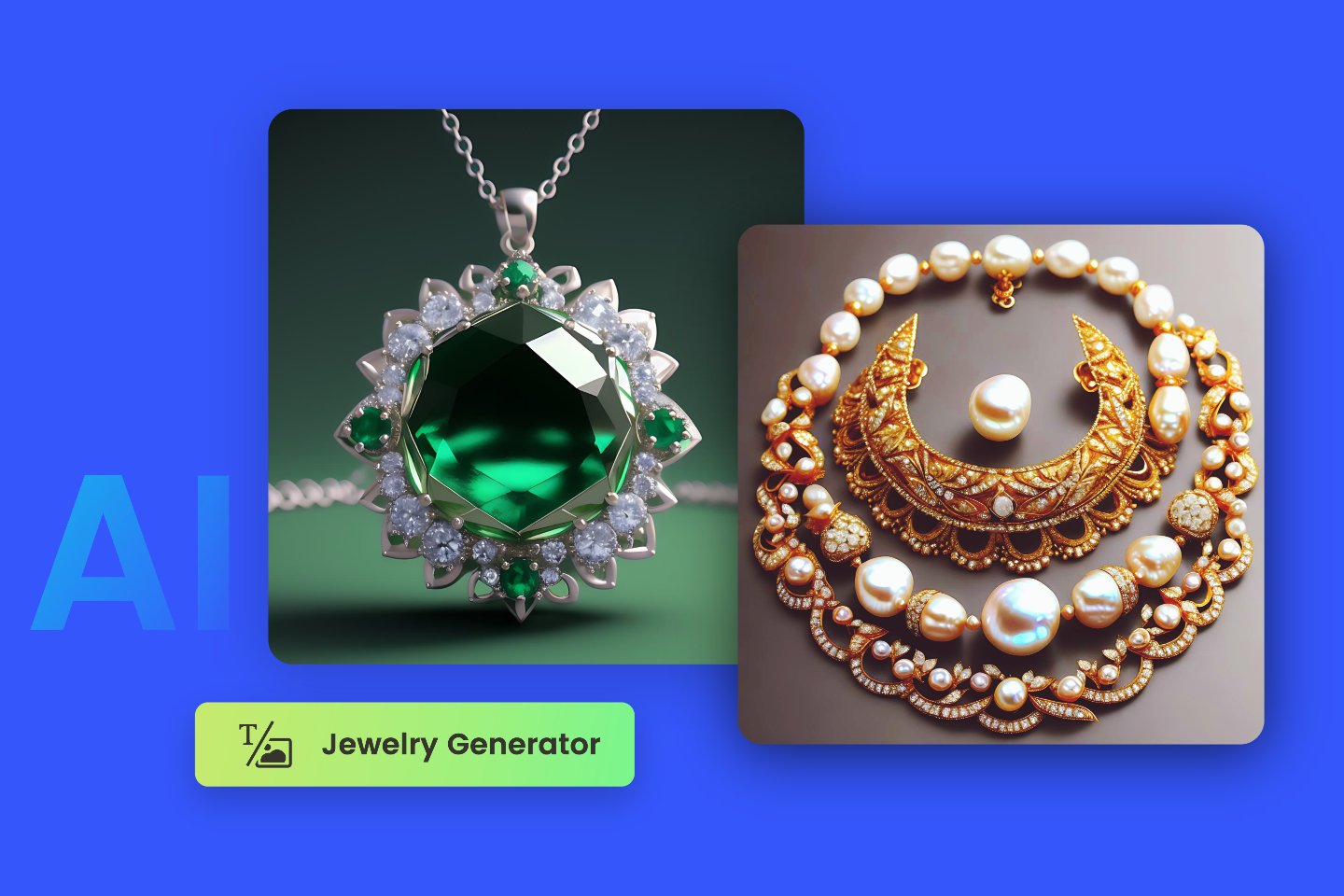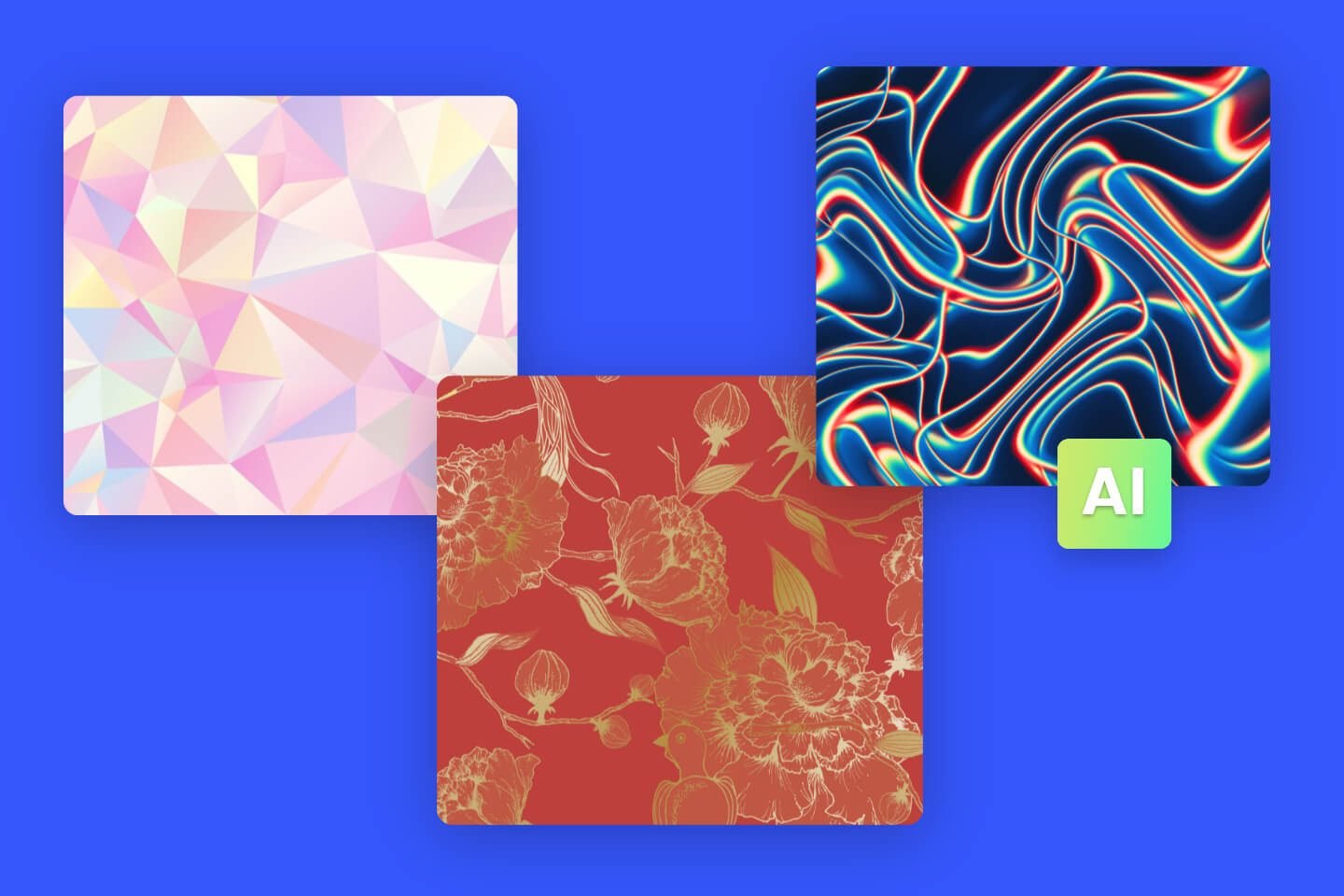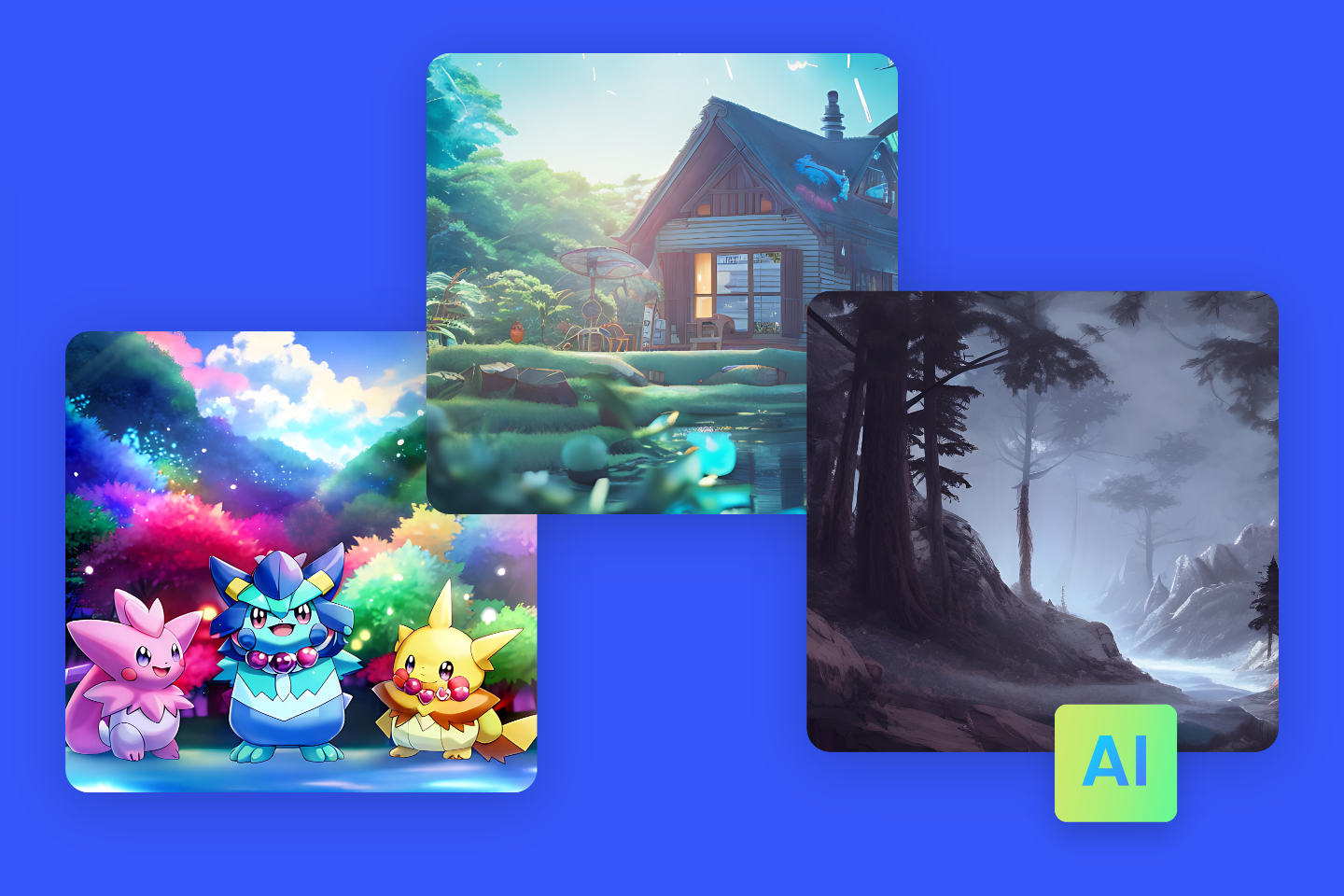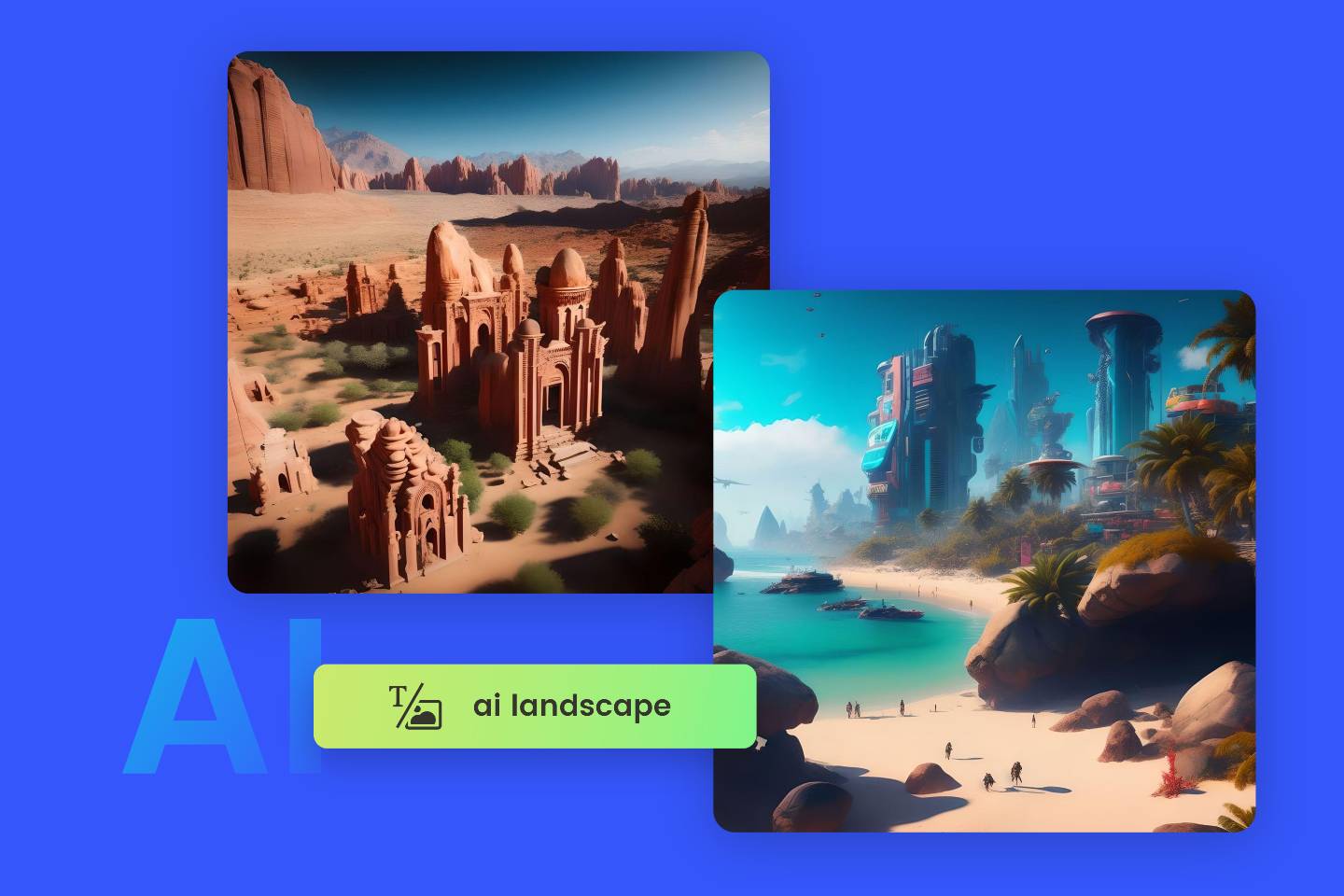Generative AI: Everything You Need to Know
Summary: In this article, we will talk about the generative AI, exploring its definition, historical evolution, use cases and so forth. Come and check it!
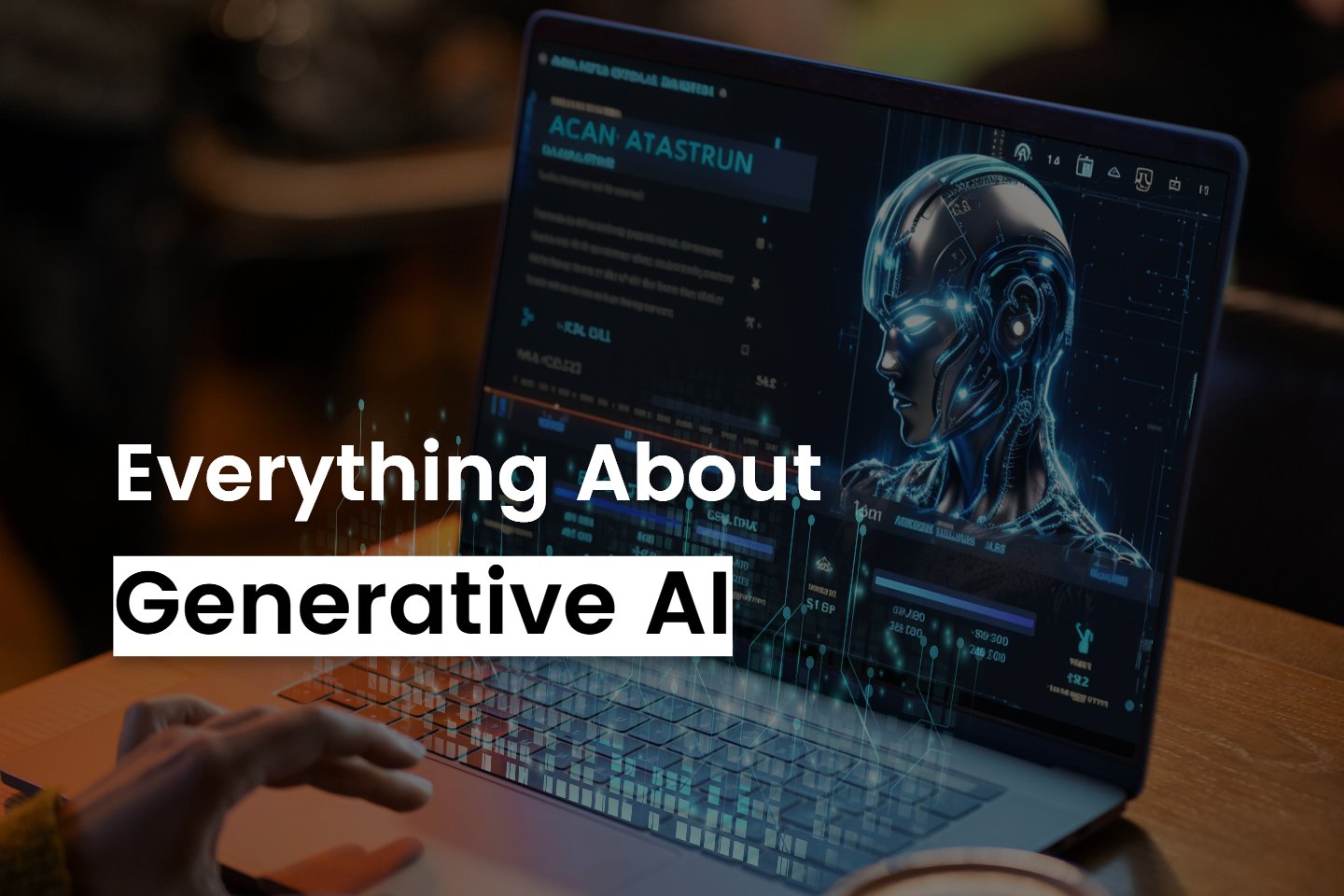
In the ever-evolving landscape of artificial intelligence, one of the most exciting and promising advancements is Generative AI.
ChatGPT, Bing, Bard, Fotor, DALL-E, Jasper…chances are good you’re leveraging some version of generative artificial intelligence on a regular basis.
This technology has the power to create, innovate, and generate content that was once thought to be solely within the realm of human creativity.
In this comprehensive article, we will dive deep into Generative AI, exploring its history, applications, benefits, challenges, and the exciting future it holds.
What is Generative AI
Generative AI, short for Generative Artificial Intelligence, is a subset of artificial intelligence that focuses on creating and generating content autonomously.
Unlike traditional AI systems, which are designed for specific tasks, Generative AI has the unique ability to produce data, images, text, audio, and even entire multimedia content independently.
It leverages advanced machine learning algorithms to mimic human creativity and produce content that is not explicitly programmed.
Generative AI models are trained on large datasets, learning patterns, structures, and statistical distributions from that data.
These models then use this learned knowledge to generate new content that adheres to the patterns and styles observed in the training data.
The content generated by Generative AI can range from human-like text, realistic images, and lifelike audio to more complex forms of multimedia content.
One of the remarkable aspects of Generative AI is its ability to create content that appears to be crafted by humans, including generating text that reads like it was written by a person, creating lifelike images and videos, and even composing music or generating spoken language.
This technology has applications in various industries, including art and creativity, content generation, healthcare, entertainment, and many more.
Historical Overview of Generative AI
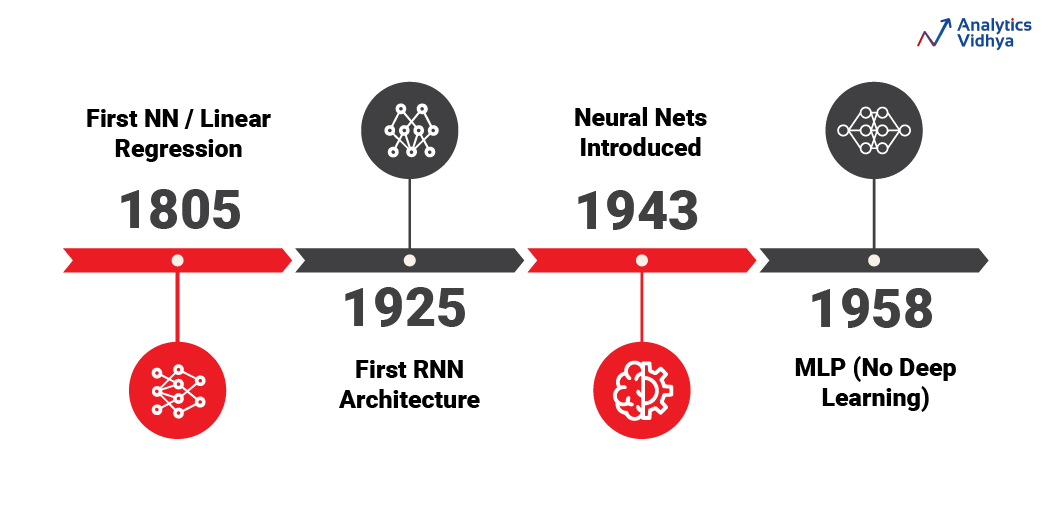
Source: Analytics Vidhya
The roots of Generative AI can be traced back to the early days of computer science and artificial intelligence. Early attempts at generative systems were limited in scope and capability. However, with the advent of deep learning and neural networks, the field of Generative AI witnessed a revolution.
In 2013, deep-learning models called variational autoencoders (VAEs) were commonly used to generate realistic speech and images, leading to more ways the models could be used. Almost 10 years later, things decidedly hit a fever pitch, with an abundance of enterprise-level platforms (Google, Microsoft, Amazon, IBM) and smaller, specialized types of generative AI applications, some of which are open source.
Now, apps such as OpenAI ChatGPT (for text generation) and DALL-E (for generated images), plus Midjourney (for images) are household names. And by 2032, the generative AI market is expected to balloon to more than $191 billion.
How Generative AI Models Work
Generative AI models work by learning patterns and structures from vast datasets. They use this knowledge to generate new content that adheres to these learned patterns. The underlying mechanism involves neural networks, which are trained to capture and replicate the statistical distribution of the training data.
For instance, a text generation model could be trained on a large corpus of text to understand grammar, syntax, and semantics. Once trained, it can autonomously generate coherent and contextually relevant text based on the input it receives.
Types of Generative AI
Generative AI encompasses various types of models and architectures that are instrumental in building AI systems capable of generating content. Here are some of the important types of Generative AI, including Generative Adversarial Networks (GANs), Variational Autoencoders (VAEs), and Transformer architectures.
Generative Adversarial Networks (GANs)
GANs have played a pivotal role in advancing Generative AI. They consist of two neural networks: the generator and the discriminator. These networks are trained simultaneously in an adversarial manner, hence the name "adversarial." The generator's role is to create content, such as images, while the discriminator's role is to distinguish between real and generated content.
GANs have applications in image generation, video synthesis, text-to-image generation, and more.
Variational Autoencoders (VAEs)
VAEs are another type of generative model, primarily used for generating data from latent representations. They consist of an encoder network and a decoder network.
VAEs are often used for tasks like image generation, denoising, and data generation where capturing the underlying structure of data is important. They are also used in applications like image-to-image translation and style transfer.
Transformer Architectures
Transformer architectures, originally designed for natural language processing tasks, have also proven to be highly effective in Generative AI.
These architectures are characterized by their self-attention mechanisms, which enable them to capture complex dependencies and patterns in data.
The Transformer architecture has been adapted for various generative tasks, such as language generation, text summarization, and even image generation.
One notable example is OpenAI's GPT (Generative Pre-trained Transformer) series, which consists of large-scale language models pre-trained on massive text datasets and fine-tuned for specific generative tasks.
Generative AI Applications
Generative AI has found its way into a wide array of applications across industries. Some notable applications include:

Language and Content Generation
Content creation for marketing and journalism
Automated translation services
Chatbots and virtual assistants
Text Generation
Text generation models, like OpenAI's GPT (Generative Pre-trained Transformer), can generate human-like text, making them invaluable for content creation, chatbots, and even generating code.
Audio and Music
Voice synthesis for navigation and voice assistants
Music composition and generation
Sound effects for entertainment and gaming
Image Generation
GANs have made remarkable strides in generating realistic images. They are used in art, design, and even creating lifelike avatars for virtual worlds.
Visual Arts and Design
Art generation and collaboration with human artists
Architectural design and visualization
Fashion design and recommendation systems
Synthetic Data
Training machine learning models for various applications, such as autonomous vehicles and healthcare
Healthcare
Drug discovery and molecular design
Medical image generation for training diagnostic algorithms
Examples of Generative AI Tools
Generative AI tools are available for different types of content generation, including text, images, music, code, and voice. You can explore some well-known AI content generators like these:
Text generation tools include ChatGPT, Jasper, AI-Writer and Lex.
Image generation tools include Dall-E 2, Midjourney, Fotor and Stable Diffusion.
Here, we recommend you to use Fotor’s AI image generator, which offers the best service of AI image generation and various popular AI styles to cater for different demands on generation.
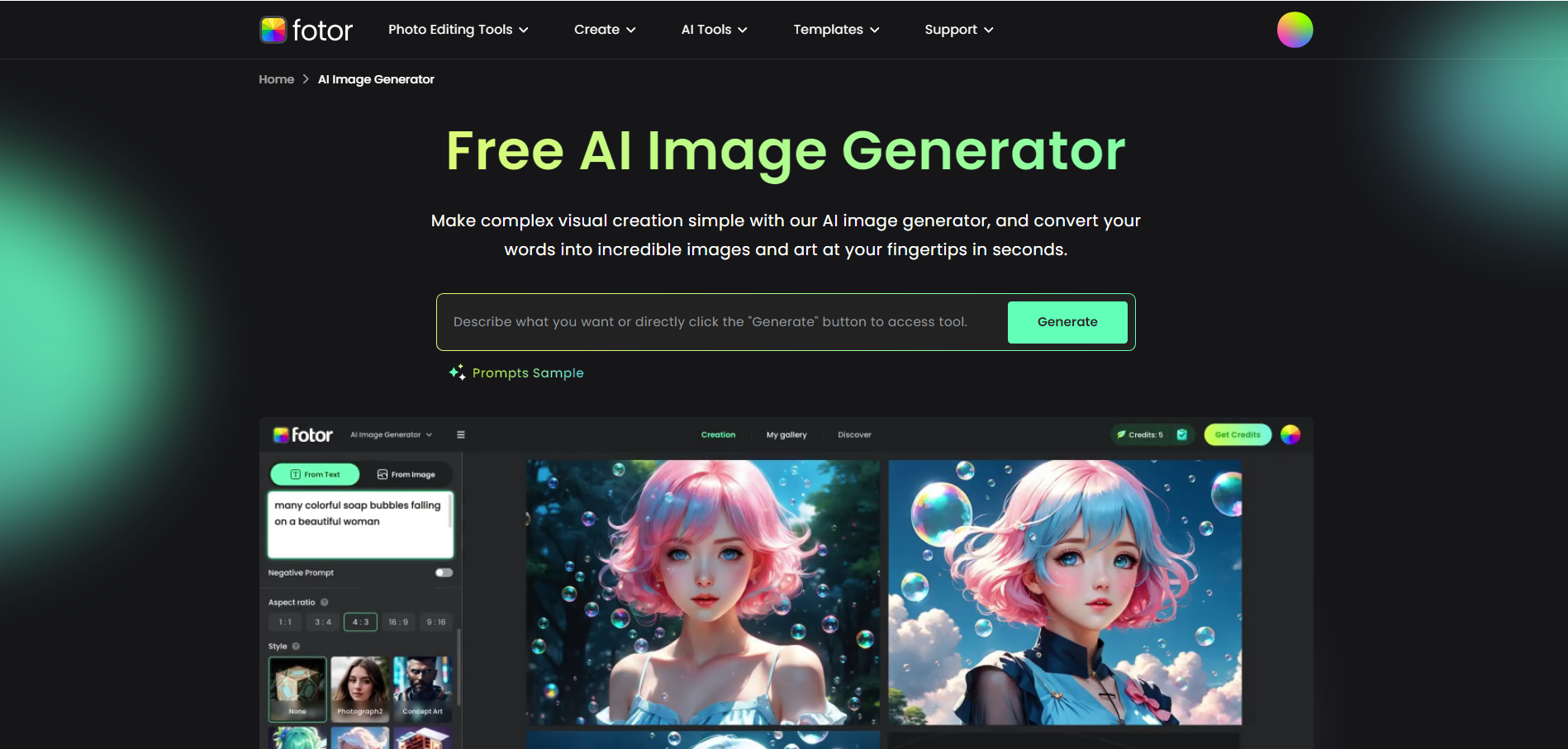

Fotor
Powerful AI image & art generator, Fotor offers everyone revolutionary access to create artwork.
AI photo editor, AI face generator, and AI design tool are available.
Till now, in its “From Text” mode, there are two model versions to choose from. Generally, you can use the “M-1-Basic” to generate the stylized photos and illustrations, covering concept art, Japanese anime, cartoon, 3D, Disney, and more of the 15 styles.
As for the “M-2-Stable”, you can use it to generate higher-quality images with totally different 11 styles, including logos, pixel art, color manga, psychedelic, and much more. Give it a try!
Music generation tools include Amper, Dadabots and MuseNet.
Code generation tools include CodeStarter, Codex, GitHub Copilot and Tabnine.
Voice synthesis tools include Descript, Listnr and Podcast.ai.
What Are the Benefits of Generative AI?
Generative AI offers a multitude of benefits across various domains.
Firstly, it unleashes unprecedented levels of creativity by autonomously producing content that can rival human-generated work. This automation not only enhances efficiency but also reduces the time and effort required for tasks such as content creation, data generation, and even artistic endeavors.
Generative AI's scalability enables the rapid production of large volumes of content, making it suitable for large-scale projects and applications.
Moreover, it caters to personalization, tailoring content to individual preferences, thereby enhancing user experiences. Importantly, it can significantly reduce costs associated with manual content creation and data generation, making it a valuable tool for businesses and organizations.
What Are the Challenges of Generative AI?
Despite its immense potential, Generative AI comes with its set of challenges.
Bias and Fairness
AI models can inadvertently inherit biases present in training data, leading to unfair or discriminatory content generation.
Ethical Concerns
The use of AI in content generation raises ethical questions, particularly when AI can produce deepfake content or fake news.
Intellectual Property
Determining ownership and copyright of AI-generated content is a complex legal issue.
Data Privacy
Generating synthetic data for machine learning can raise concerns about data privacy if it resembles real, sensitive information.
Technical Limitations
Generative AI models require substantial computational resources, limiting access for smaller organizations and individuals.
The Future of Generative AI
The future of Generative AI holds the promise of transformative advancements across various fields. As this technology continues to evolve, we can anticipate enhanced content creation, with Generative AI assisting creators by providing inspiration, generating drafts, and facilitating the creative process.
Furthermore, Generative AI will integrate with other AI technologies, such as computer vision and natural language processing, expanding its applications and shaping a future where creative potential knows few bounds.
Conclusion
Generative AI is a transformative technology that has the potential to reshape industries, enhance creativity, and automate content generation. As it continues to evolve and address challenges, we can expect it to play an increasingly significant role in our lives. Stay tuned for the exciting developments in the world of Generative AI, as this field continues to push the boundaries of what is possible.
